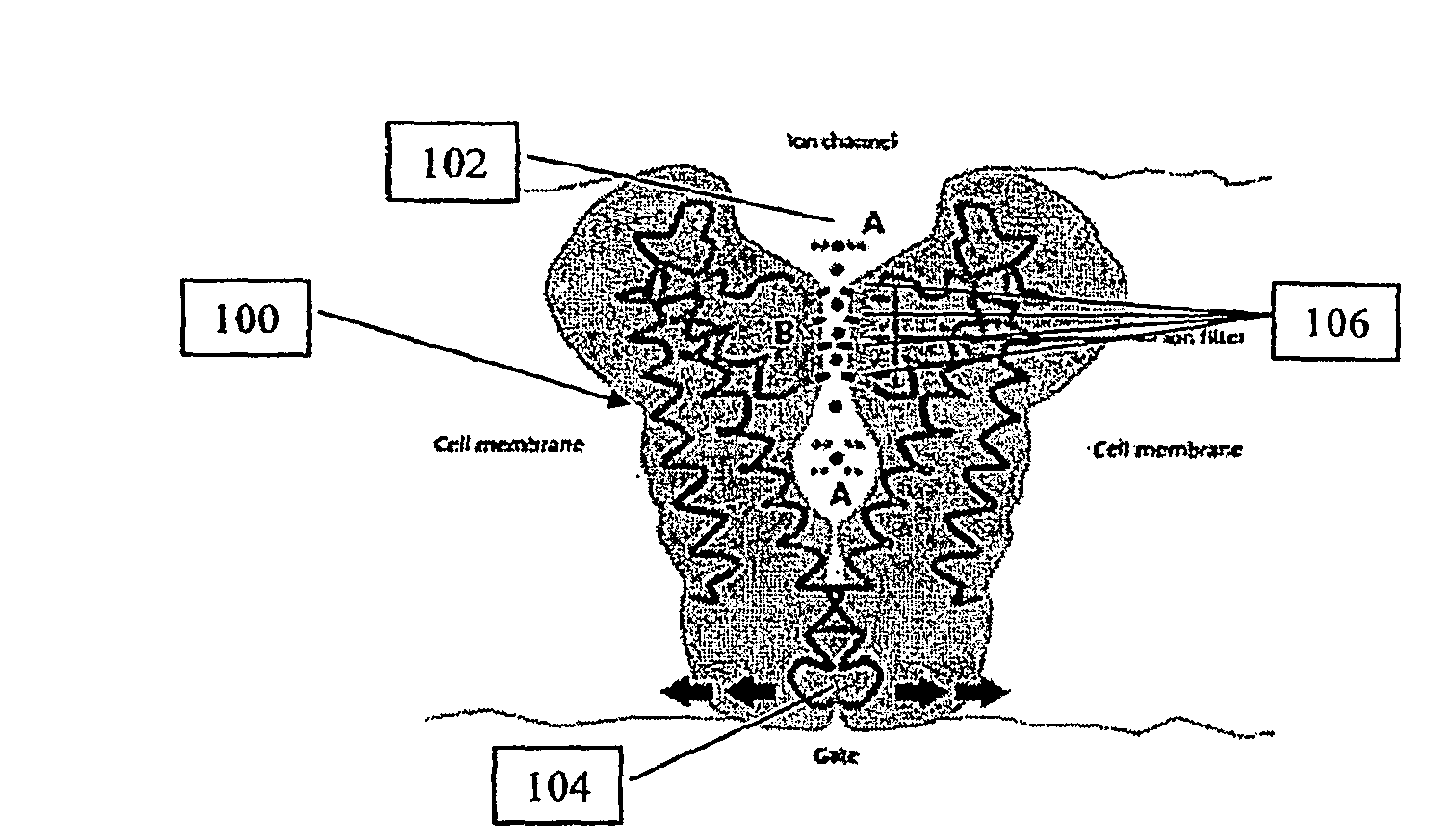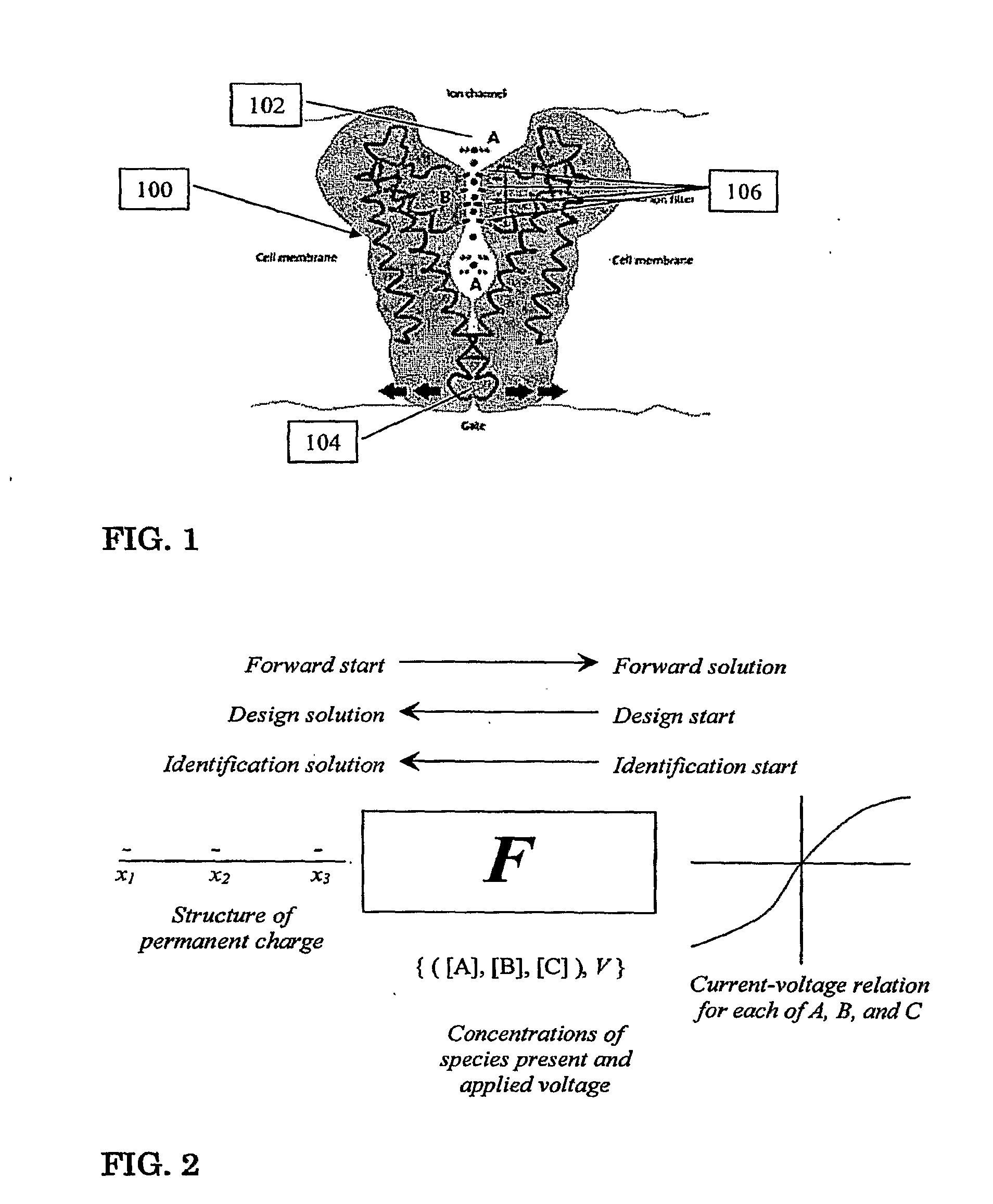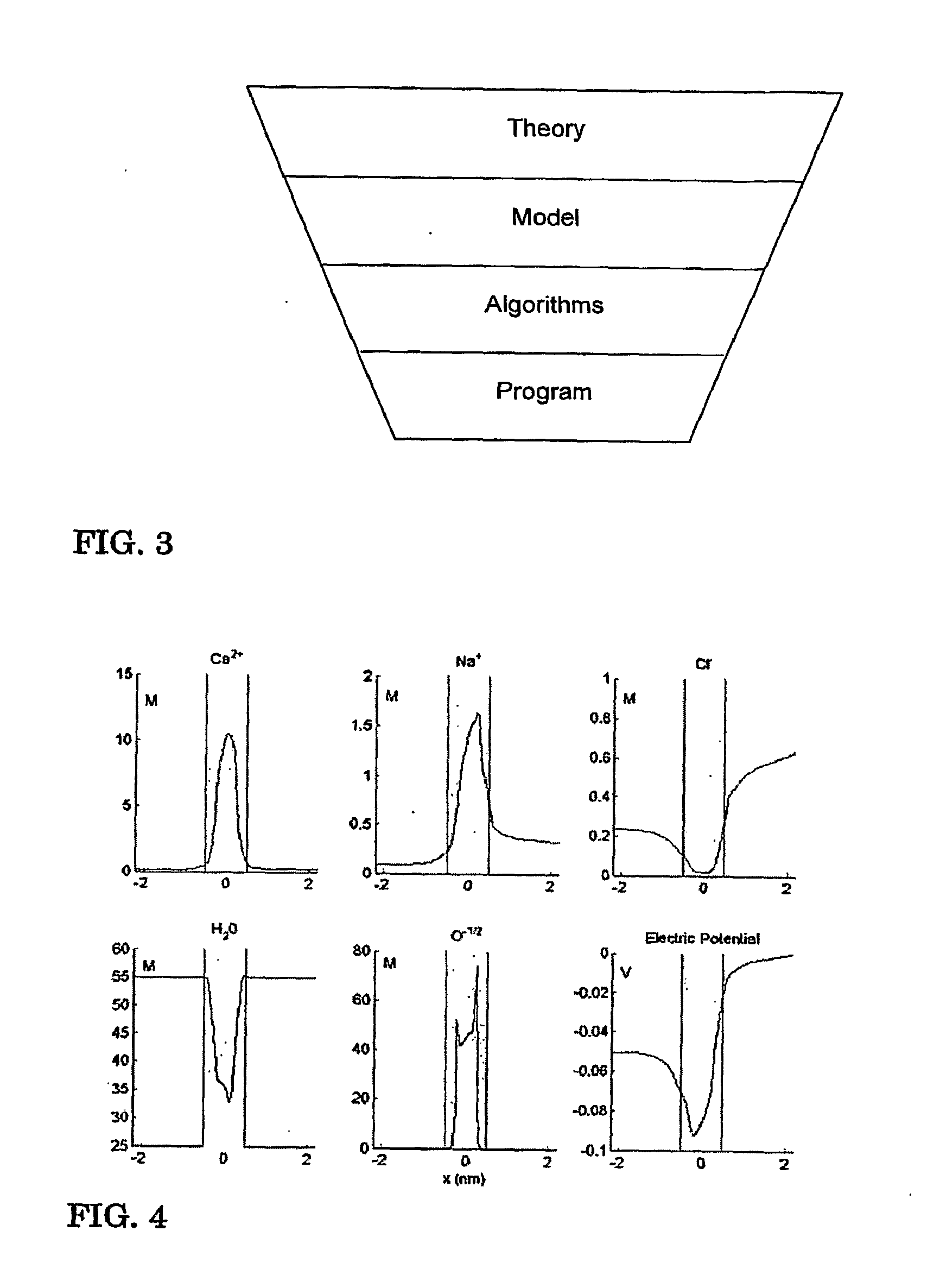If the squeeze starts anywhere else, contraction of the heart
muscle will be futile, the
ventricle will not function as a pump, and the animal or human will will quickly lose
consciousness and die.
This makes the
system very labile and easy to interrupt because any difficulty the tissue has because of its contractile function immediately affects the coordination of the contraction that allows the
ventricle to
pump blood.
Thus limitations on the current flow through a
calcium channel of the heart is one example of a technical deficiency of the heart.
There are many others which physicians and pharmacologists discover every day, unfortunately.
Third, the x-
ray crystallography studies are only as good as the crystals provided, and take considerable time and resources.
Fourth, the expertise needed to conduct the x-
ray crystallography studies is sufficiently different from the manufacture and design of the channels that it is rare for the same worker to be able to have the complete skill set, and thus workers in the field are dependent on the
technical skills of a crystallographer.
However, there are present shortcomings in the ability to understand how the structure of an ion channel dictates its function such that the technical ability to make an ion channel is not sufficient to solve problems in the field.
The technical limitations of present
design methods are simple to state but hard to remedy.
Generally, existing
design methods rely on exhaustive
trial and error experimentation of the highest quality, energy, and imagination to check reasonable guesses.
This approach to design is inefficient and rarely works in complex systems.
Such
trial and error methods are essential for learning “the lay of the land”, for describing the systems and their components, but they are very inefficient for design.
Such calculations, despite heroic efforts and enormous computers, are unlikely to succeed because biological function occurs on
millisecond time scales or slower, and atomic motions occur on 0.0000000000000005 sec time scales (
femto seconds and faster).
While there have been some attempts to use reduced models of channel function that do not include all atomic motions, they have not succeeded in designing a channel of a desired selectivity or in discovering the structure of an ion channel from data taken from the operation of a channel
in vivo or
in vitro.
Efforts to design ion channels by solving ensembles of possible ion channels in the hope of finding suitable structures have not been productive, as illustrated by references [93]-[128].
When searching for causes of observed or desired effects the problems are termed “inverse problems” which are likely to be difficult to solve.
The direct problem usually is to predict the evolution of the studied
system (described e.g. by a
partial differential equation) from knowledge of its present state and the governing physical laws including information on all physically relevant parameters including boundary conditions and initial conditions.
Thus, it is characteristic of established models that their forward problems are well posed.
If one of Hadamard's conditions for terming a problem well-posed is violated, then the problem is called ill-posed.
A unique solution necessarily denies the
problem solver the ability to select which properties to favor in a solution.
However, ill-posed problems may lack any solution, or solutions may exist but are not unique (which is to say there may be more than one answer), and / or (unique or non-unique) solutions are not stable with respect to
noise, modeling errors or other, even numerical, inaccuracies.
This is in contrast to an identification problem where having a choice of solutions means that the identification is ambiguous.
Models are often only a representation of reality with limited accuracy.
Even if the random and / or
systematic deviation from the data is small, or the error in the model is small, algorithms developed for well-posed problems will fail if they do not address the
instability in the overall process of
estimation of parameters.
If the parameter is piecewise constant and one is mainly interested in the location where it jumps, this can also be interpreted as a
shape reconstruction problem.
Some common features of inverse problems that provide technical solutions to technical problems are problems such as amplification of high-frequency errors, a need to use one or both of a priori information and regularization to restore stability, errors of differing natures that require separate treatment, and intrinsic
information loss even if one does everything in the mathematically best way.
Examples of errors requiring different treatment are errors of approximation, which are how closely the model is hewing to the actual
system, and the propagation of
data error, wherein errors in earlier calculations cause greater errors in later calculations.
More desirably, such methods would not use
trial and error approaches that require solving ensembles of possible ion channels in the hope of fortuitously finding the desired result.
 Login to View More
Login to View More 


